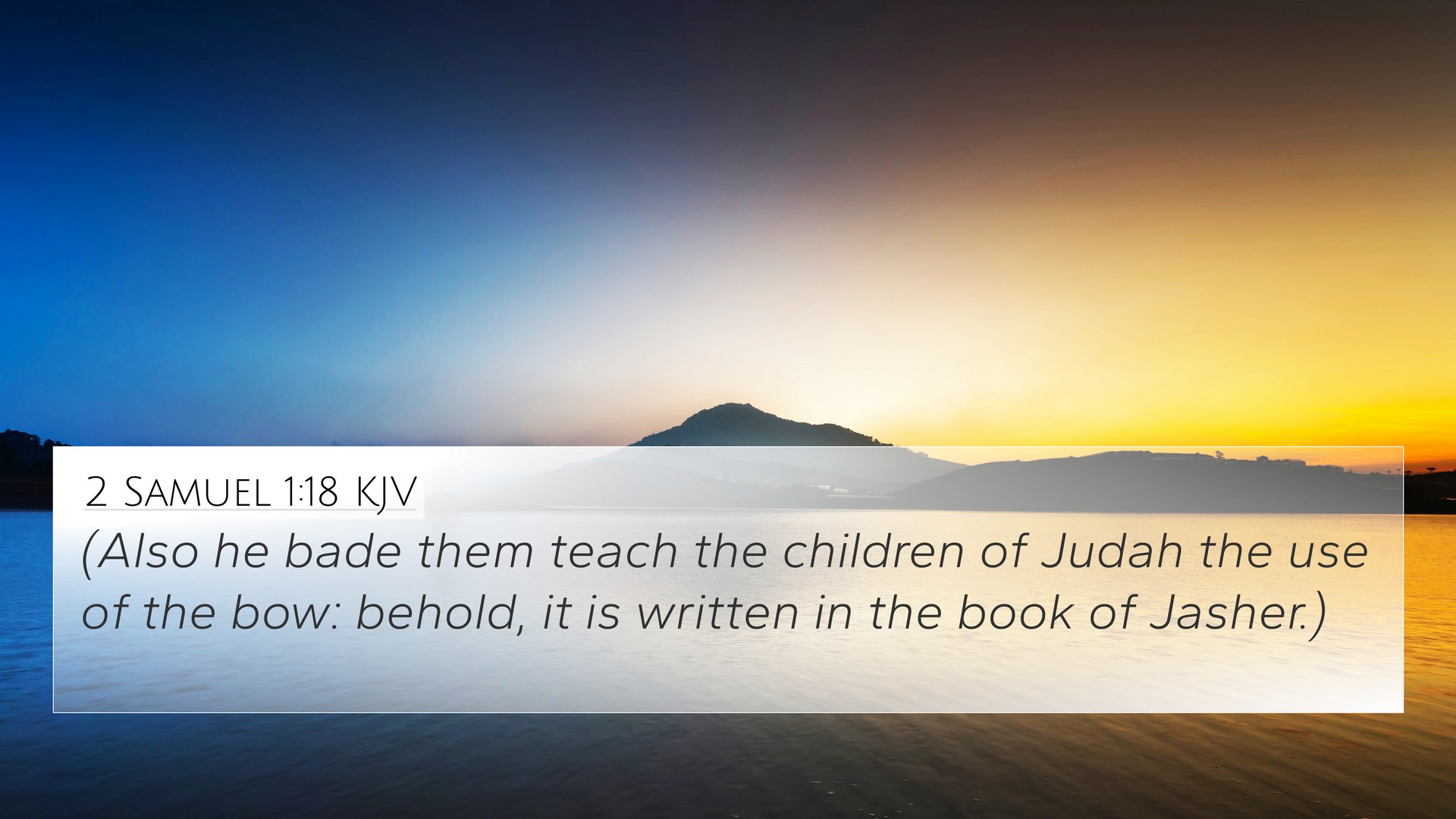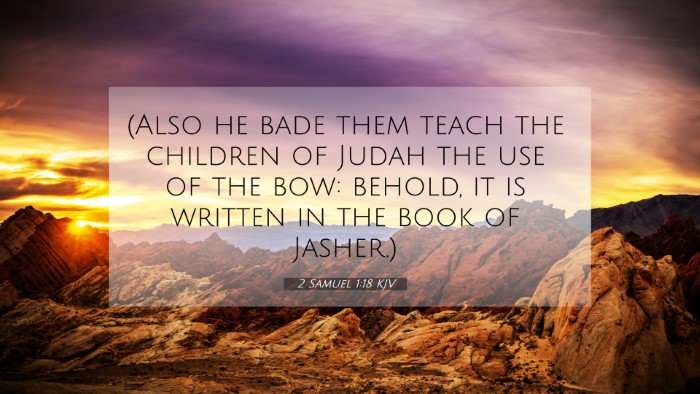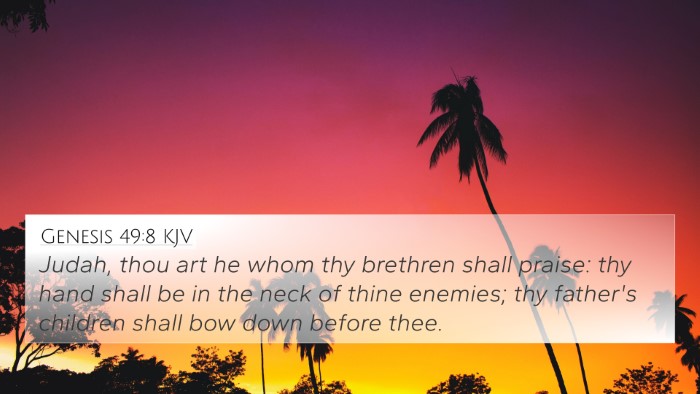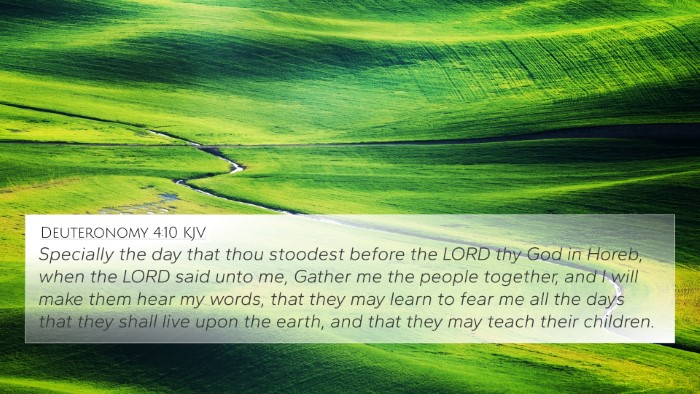Understanding 2 Samuel 1:18
Verse: 2 Samuel 1:18 states, “And he bade them teach the children of Judah the use of the bow: behold, it is written in the book of Jasher.”
Context and Overview
The verse is situated in the narrative following the death of Saul and Jonathan, where David laments their passing. In this poignant moment, David commands the teaching of the use of the bow to the children of Judah, signifying a tactical preparation for warfare. The reference to the “book of Jasher,” which is now lost, emphasizes the historical importance of the event and the cultural transmission of knowledge.
Commentary Insights
-
Matthew Henry's Commentary:
Henry points out that David’s command reflects foresight in preparing his people for battle. The bow symbolizes strength and readiness, characteristics David wished to instill in the tribe of Judah. The mention of the “book of Jasher” serves as a reminder of past heroic deeds that serve as inspiration for the present and future generations.
-
Albert Barnes' Notes:
Barnes notes the significance of teaching the children. This act was not just about physical skills but also about creating a strong national identity rooted in historical context. The reference to the book emphasizes the narrative's legitimacy, portraying the significance of preserving documented memories and teachings.
-
Adam Clarke's Commentary:
Clarke elaborates on the historical implications of the “book of Jasher,” a text that chronicled the valor and achievements of Israel's heroes. This underscores the importance of oral and written traditions in Israel’s history. Furthermore, Clarke indicates that teaching the bow symbolizes preparing future generations to defend their honor and land.
Thematic Connections
This verse is rich in themes that can be explored through cross-referencing.
Cross-References:
- Judges 3:16 - The story of Ehud and the use of a sword highlights themes of warfare and deliverance.
- 1 Samuel 20:35-38 - Jonathan and David's friendship encapsulates loyalty, setting the tone for David’s actions after Saul’s death.
- Psalm 144:1 - “Blessed be the Lord, my rock, who trains my hands for war, and my fingers for battle,” connects David’s role as a warrior and leader.
- 2 Samuel 22:35 - Here, David acknowledges God teaching his hands to war, linking divine support to human action.
- 1 Chronicles 12:2 - Discusses the warriors that came to David, emphasizing the strength of the tribe as it prepares for battles ahead.
- Proverbs 22:6 - The necessity of training children serves similar educational purposes as teaching the use of the bow.
- Isaiah 38:24 - Reflects how kings should learn from their predecessors and be prepared for hardships through education and training.
Exploring Bible Verse Connections
The act of David teaching the children of Judah can be compared across the Scripture to highlight themes of preparation, legacy, and the importance of education within the community.
Insights on Cross-Referencing:
- Methodology: Understanding how to identify connections between Old and New Testament verses enhances biblical literacy.
- Tools for Bible Cross-Referencing: Utilizing a Bible concordance or a dedicated Bible cross-reference guide can greatly assist in exploring relational themes.
- Educational Purpose: As seen in David's example, teaching scripture can foster future leadership and resilience among believers.
Concluding Thoughts
2 Samuel 1:18 reflects the profound impact of leadership, education, and historical remembrance. David’s directive not only empowers future fighters but also illustrates the importance of learning from the past. Understanding this verse in conjunction with others through cross-referencing offers deeper insight into the theological and historical narrative of the Bible.
Bible Study Applications:
- Consider how the practice of teaching Biblical principles applies within your community.
- Explore how events in the Old Testament inform the teachings in the New Testament.
- Utilize cross-references when studying a particular theme or verse to gain a holistic understanding of scripture.





